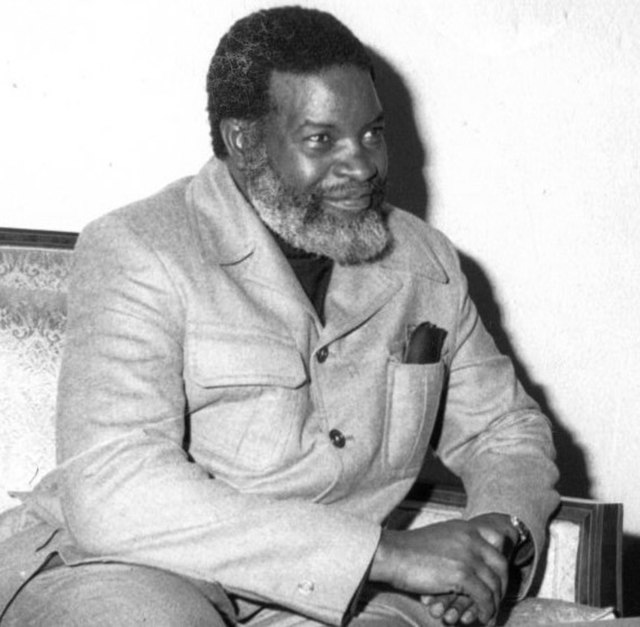Koevoet was the counterinsurgency branch of the South West African Police (SWAPOL). Its formations included white South African police officers, usually seconded from the South African Security Branch or Special Task Force, and black volunteers from Ovamboland. Koevoet was patterned after the Selous Scouts, a multiracial Rhodesian military unit which specialised in counter-insurgency operations. Its title was an allusion to the metaphor of "prying" insurgents from the civilian population.
Koevoet Memorial at the Voortrekker Monument, Pretoria
PLAN insurgents on the march
SAP Casspir similar to those utilised by Koevoet.
The South African Border War, also known as the Namibian War of Independence, and sometimes denoted in South Africa as the Angolan Bush War, was a largely asymmetric conflict that occurred in Namibia, Zambia, and Angola from 26 August 1966 to 21 March 1990. It was fought between the South African Defence Force (SADF) and the People's Liberation Army of Namibia (PLAN), an armed wing of the South West African People's Organisation (SWAPO). The South African Border War was closely intertwined with the Angolan Civil War.
Clockwise from top left: South African Marines stage for an operation in the Caprivi Strip, 1984; an SADF patrol searches the "Cutline" for PLAN insurgents; FAPLA MiG-21bis seized by the SADF in 1988; SADF armoured cars prepare to cross into Angola during Operation Savannah; UNTAG peacekeepers deploy prior to the 1989 Namibian elections; a FAPLA staff car destroyed in an SADF ambush, late 1975.
Sam Nujoma, founder and leader of SWAPO and its OPO predecessor.
Equipment of Soviet origin supplied to SWAPO. From left to right: satchel, Dragunov sniper rifle, PG-7V RPG projectile, and RPG-7 launcher.
Cuban-manned PT-76 tank in the streets of Luanda, 1976.






